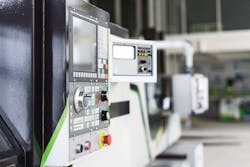How condition monitoring and obsolescence management alleviate costly downtime
According to a study by Information Technology Intelligence Consulting (ITIC), the average cost of a single hour of downtime is a colossal $100,000. Inevitably, the true price depends on several variants, such as the time of day and the industry. This article discusses how condition monitoring and obsolescence management alleviate costly downtime in process industries.
Unplanned downtime is the single largest cause of lost production time for manufacturers in processing — that is food and beverage, pharmaceutical, chemical and oil and gas production. Production stoppages in these sectors can be attributed to several causes, perhaps a lack of ingredients for the required batch or a shortage of operators to manage the equipment. However, the most common cause of downtime in processing is equipment breakdowns.
Ultimately, time is money. If the production line is idle and products are not being processed, the delay will damage the business’ bottom line. However, it is not only lost production time that can cause financial havoc for a manufacturer. In fact, downtime for process industries can result in much more collateral damage.
Take food and beverage manufacturing as an example. Production is typically high volume with fast output and often requires the use of raw materials that can spoil if not used according to schedule. Unexpected downtime in this industry can lead to delivery delays, wasted resources and subsequent order backlogs. What is more, the solution to unexpected stoppages in this sector is never as simple as restarting the production line.
Replanning of processes and management interventions may be required to clean up the impact of this interruption. For example, an industrial motor overheated and the breakdown caused a 24-hour delay in planned production. During this time, enterprise resource planning (ERP) software already reordered raw ingredients for the next day, as if the production had gone ahead. This leaves the manufacturer with a surplus of perishable ingredients, which are likely to spoil before the production line has capacity to use them.
The downtime has also caused missed deadlines for delivery — and potential fines from large customers. However, lack of capacity means the manufacturer cannot deliver these delayed orders without disrupting the order schedule for the following day. In this instance, it is not only the financial damage the manufacturer must consider, but the reputational damage caused by canceling a customer’s order.
Minimizing downtime should be a priority for manufacturers, but equipment breakdowns and failures cannot always be entirely avoided. Often, the machinery used in these facilities is legacy equipment and as a result, deterioration over time is inevitable. The most effective way to minimize the likelihood of a machine breakdown — or at least minimize the collateral damage — is to anticipate the problem in advance by using condition monitoring techniques.
Unexpected downtime in the food and beverage industry can lead to delivery delays, wasted resources and subsequent order backlogs.
Condition monitoring
As the name suggests, condition monitoring describes the overseeing of machinery to monitor its state and performance. The process is used to identify significant changes to the condition of a machine, for example, monitoring the temperature of a piece of equipment to assess whether it is showing signs of overheating while in operation.
There is a common misconception that condition monitoring requires the creation of long-winded maintenance programs that need significant time and effort to run. However, that is not necessarily the case.
Some of the most basic forms of condition monitoring simply require a visual inspection of equipment. Naturally, manufacturers should appoint an expert in this field to ensure the inspection is completed to a high standard. By keeping a record of any visual signs of wear on the machinery, manufacturers can use this information to analyze how quickly a machine is deteriorating and whether it requires immediate attention.
Visual inspection may seem like a simple process, but this is only valuable if the inspection is completed accurately. Before taking any readings, manufacturers should ensure the machinery is warmed up and fully operational. A reading from a machine can be very different depending on if the machine is cold or if the equipment has been in operation for a few hours.
A step up from visual inspection, vibration analysis can provide more accurate operational insight into the condition of equipment. Vibration analysis is a key part of a strong condition monitoring regime. By recording the speed of machines by their vibration, a manufacturer can indicate if it is showing signs of failure. This can be done periodically, as part of a scheduled maintenance plan, or continually by using sensors to collect vibratory data and acoustic emissions.
A good vibration database will include three types of data — the trend, spectrum and time waveform. Trend data describes the overall vibration parameter and should record the date and time that the reading was taken — this assists with identifying patterns in deterioration. Spectrum measures the amplitude of the vibration related to its frequency and the time waveform measures the raw signature of the vibration without filtering or processing.
Predictive analytics
Vibration checks and visual inspections should be conducted every four to eight weeks if completed manually. However, there are ways to automate the process by using sensors and software. Intelligent control software, for instance, could automatically acquire performance data from sensors on the equipment. The software will then process this data and provide predictive analytics on the machinery. Predictive analytics describes the automated analysis of operational data of machinery to identify when a machine is likely to break down.
Predictive analytics also allows for pattern recognition. This can decode the relationships between certain processes and product failures and allows manufacturers to quickly identify the cause of a machine breakdown.
Consider this example: A pharmaceutical manufacturing facility has a reoccurring problem with unexpected downtime. One of the facility’s vibratory bowl feeders, a system that automatically separates pills onto a conveyor, has broken down several times, but the operator has yet to identify the cause. Using software, pattern recognition can identify a correlation between the failures and a specific batch of production.
As an example, say the software identifies the size of the product in a specific batch is too large for the speed at which the machine is feeding the pills to the conveyor. This minor blockage is causing the machine to overheat, resulting in multiple breakdowns. By identifying this, the manufacturer can make changes to the production line to ensure this does not happen again, minimizing downtime and optimizing production.
Quickly diagnosing issues like this allows manufacturers to avoid much bigger problems in their facilities. There is often a delay in time between where a fault starts and the point in which the fault can actually be detected. During this period, the condition of the equipment will begin to deteriorate. If the problem is not detected at the first possible opportunity, the condition will continue to decline until the point of failure. This could be weeks or months after the problem began.
Intelligent control software can automatically acquire performance data from sensors on the equipment.
When a machine operates in this deteriorating state, it can damage other pieces of equipment around it, particularly if it is part of a connected production line. What’s more, this could lead to irreversible equipment damage to the piece of machinery and sometimes require a replacement. This can result in even longer periods of unplanned downtime, particularly if the equipment is obsolete and proves difficult to replace.
Obsolescence management
When a piece of machinery breaks down, a replacement part can be sourced and fitted with relative ease in some industries. However, it is not always as simple for equipment in processing sectors. This is particularly evident for those that rely heavily on legacy systems, such as pharmaceutical and food manufacturing, chemical processing and the oil and gas industry.
Due to the delicate nature of these sectors, equipment is often subject to stringent regulations. This means there is no such thing as a quick upgrade. The U.S. Food and Drug Administration (FDA) recently acknowledged that it does sometimes stand in the way of the adoption of new equipment due to its stringent regulations. The consequence is that machinery in these sectors tends to be dated, with a heavy reliance on obsolete parts to make repairs possible. This is not ideal when the downtime clock is ticking.
Chemical processing is an ideal example of this problem. A turbine in a chemical processing plant requires considerable support from several pumps to ensure the condensate water and cooling systems are properly maintained. Most of these pumps will be powered by high-voltage motors, but some of these motors could be more than 20 years old. When the motor eventually breaks down, it is highly unlikely that an exact replacement will be available off-the-shelf. In this instance, what are the options?
Purchasing a new motor may seem like the fastest option, but that is not always true. A brand new part will require compatibility checks with the rest of the system, not to mention the hassle of ensuring it meets the regulations associated with chemical processing. Then, there is the added cost of upgrading other elements of the system that may need to be adapted as a result of changing the motor. However, just because a part is obsolete, it does not mean a replacement cannot be found. Manufacturers should forge a relationship with an obsolete parts supplier to ensure they can source and replace broken machinery quickly — even if the part is obsolete. Otherwise, when a machine breaks down, it could result in costly and long-winded downtime.
Inevitably, some instances of downtime cannot be avoided. However, by using condition monitoring techniques, manufacturers can minimize the likelihood of unplanned stoppages. What is more, by putting a clear obsolescence strategy in place, manufacturers in the process industries need not worry about sourcing replacements for their rare, legacy equipment should it fail or breakdown.
Few manufacturers could afford to lose $100,000 and, in reality, downtime in the processing sectors can cost much more than this industry average. To minimize the risks, manufacturers must commit to condition monitoring and obsolescence management.
EU Automation stocks and sells new, used, refurbished and obsolete industrial automation spares. Through its global network of preferred partner warehouses, and wholly owned distribution centers, it provides worldwide express delivery on all products meaning it can supply any part, to any destination, at very short notice.


